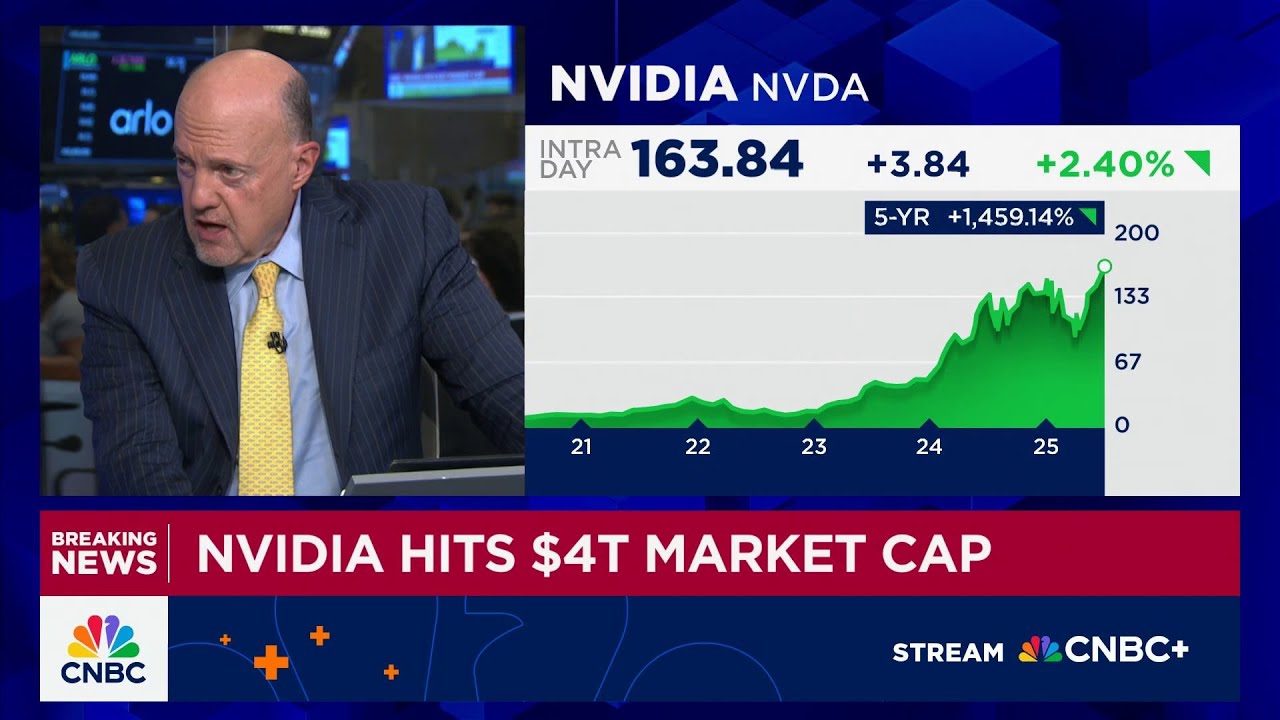Nvidia’s achievement of a $4 trillion market cap underscores its leadership in accelerated computing hardware, driven by AI growth and strong retail investor support despite economic and political challenges. The discussion highlights Nvidia’s unique position compared to other tech stocks, advising long-term investment due to its consistent innovation and market dominance.
The discussion centers around Nvidia becoming the first company to reach a $4 trillion market capitalization, a milestone that highlights the evolution of hardware technology. The speaker emphasizes that Nvidia’s success is not solely due to generative AI but rather accelerated computing, an area where Nvidia leads significantly. Unlike many companies that focus on software, Nvidia’s dominance in hardware sets it apart, making it a unique leader in the tech industry.
The conversation also touches on the broader economic and political context, particularly the impact of tariffs and trade uncertainties. Despite these challenges, the AI-driven growth of companies like Nvidia is seen as powerful enough to overshadow such concerns. The speakers note that while political developments and tariff announcements can influence markets, the enthusiasm around AI and Nvidia’s role in it tends to keep investor focus on growth rather than distractions.
Retail investors are highlighted as a key force behind Nvidia’s stock performance. The speakers suggest that individual investors are optimistic and willing to hold onto Nvidia shares for the long term, recognizing the company’s potential to generate substantial wealth. This contrasts with institutional investors, who reportedly exited Nvidia years ago, missing out on the recent gains. The retail investor’s perspective is framed as one of patience and belief in the company’s enduring value.
A comparison is made between Nvidia and other tech stocks like JDS Uniphase, illustrating the difference in investment outcomes. While some tech stocks have faltered, Nvidia’s consistent growth and market leadership have rewarded long-term holders. The advice given is to maintain a position in Nvidia, possibly trimming it slightly to manage risk, but not to sell off completely, as the company’s prospects remain strong.
Finally, the discussion briefly shifts to broader market behavior and consumer habits, with a mention of Amazon and how people’s purchasing choices can reveal underlying trends. This part underscores the interconnectedness of technology companies and consumer behavior, suggesting that understanding these patterns can provide insights into market dynamics and investment opportunities. Overall, the video conveys a strong bullish sentiment on Nvidia, driven by its hardware innovation and the transformative impact of AI.
